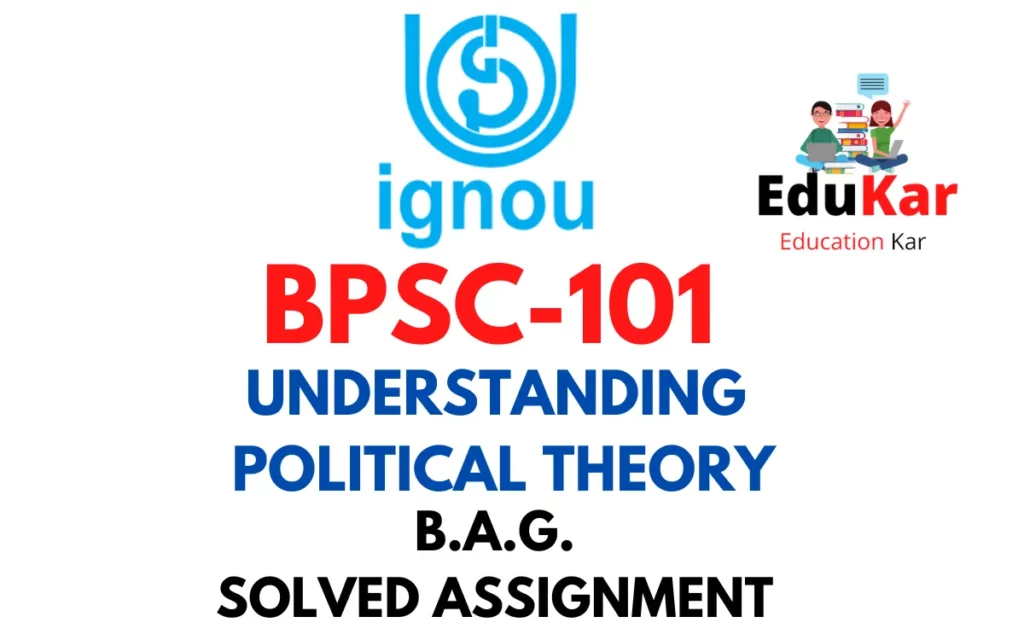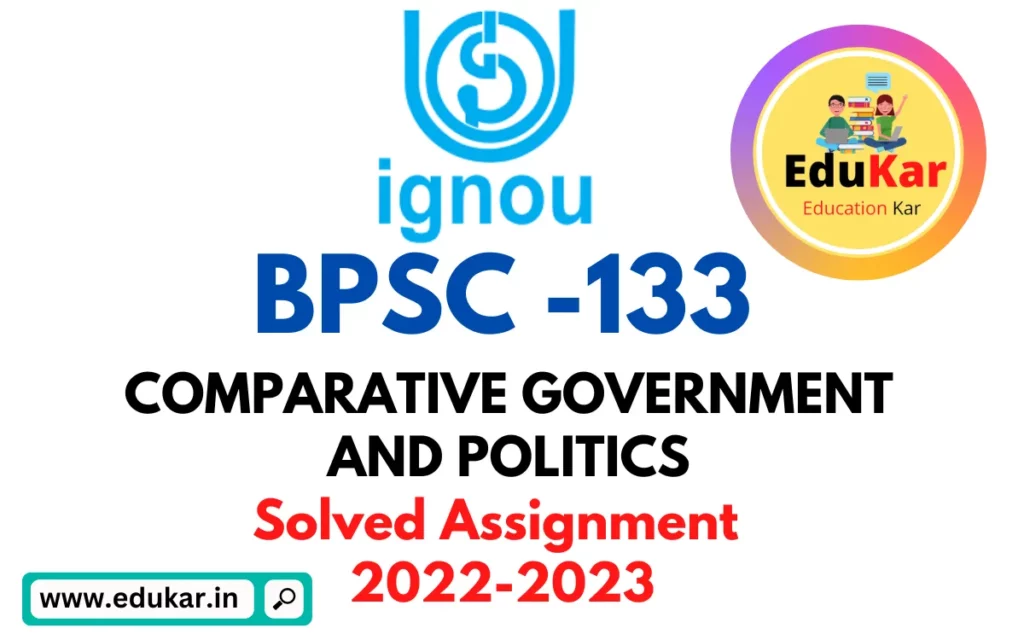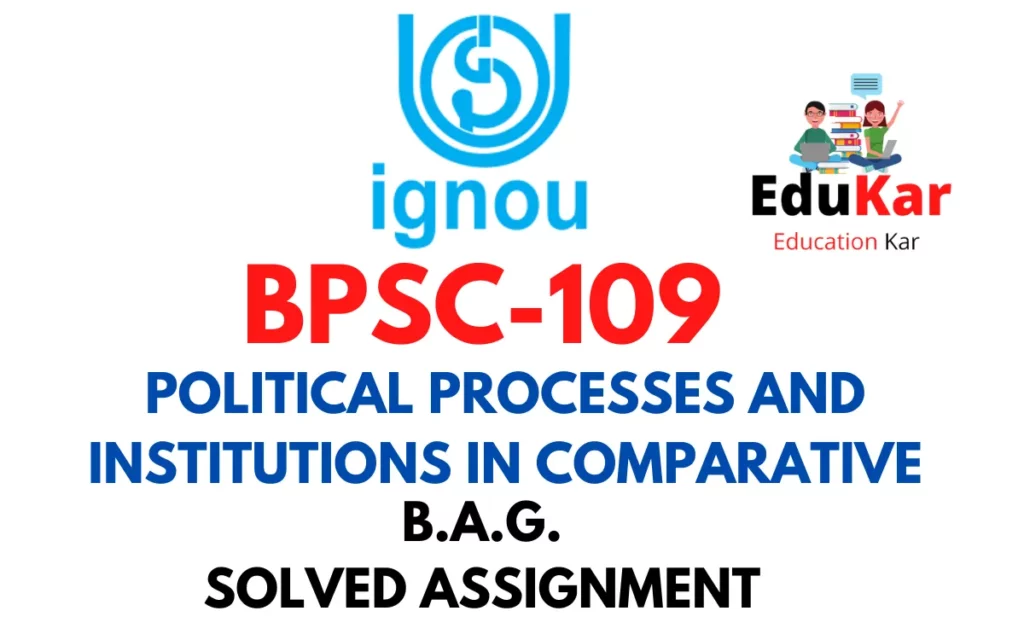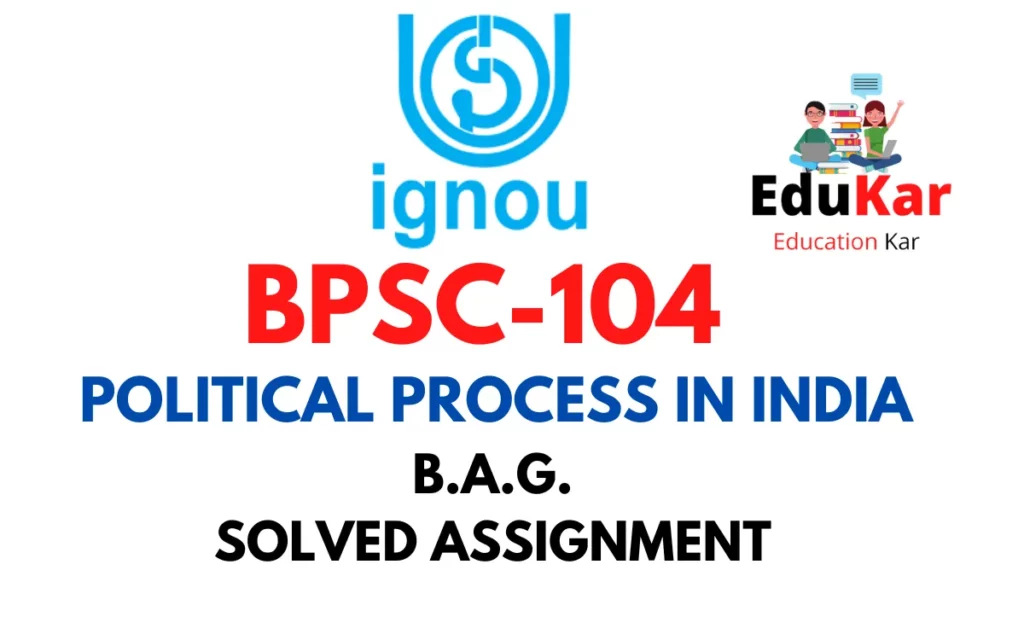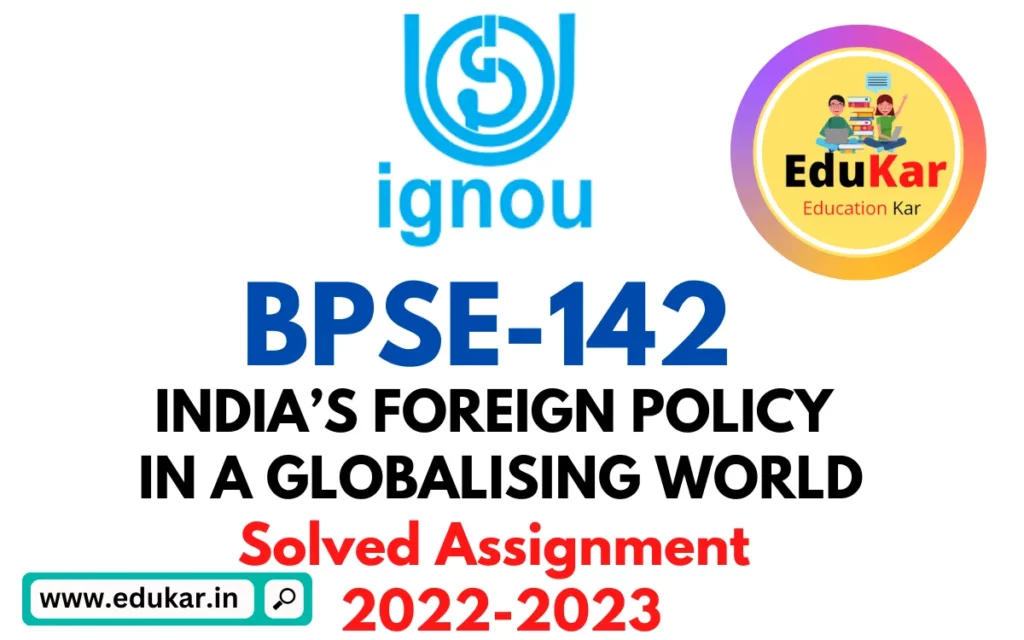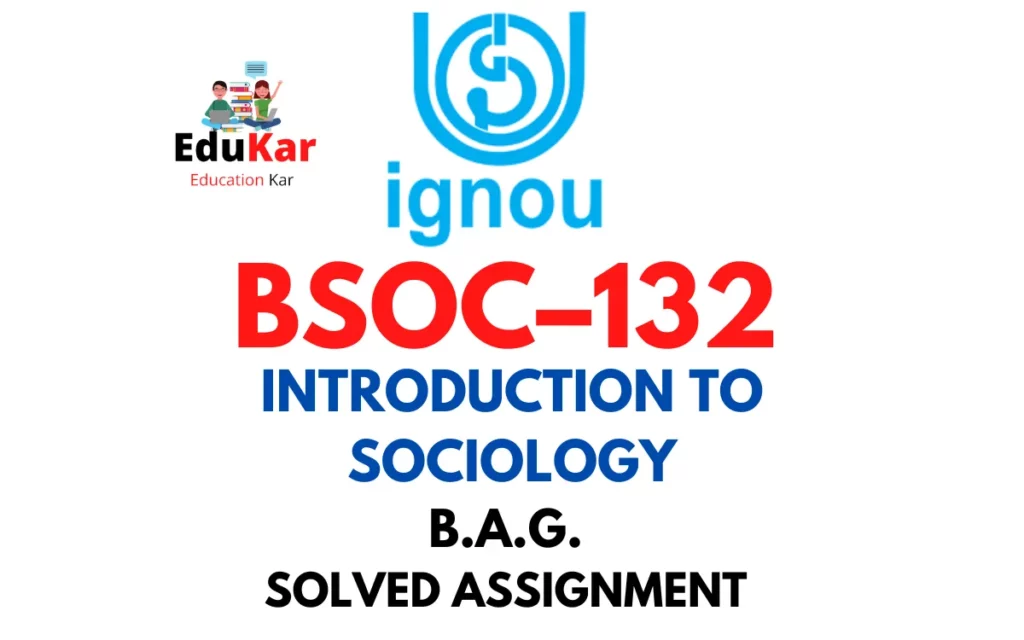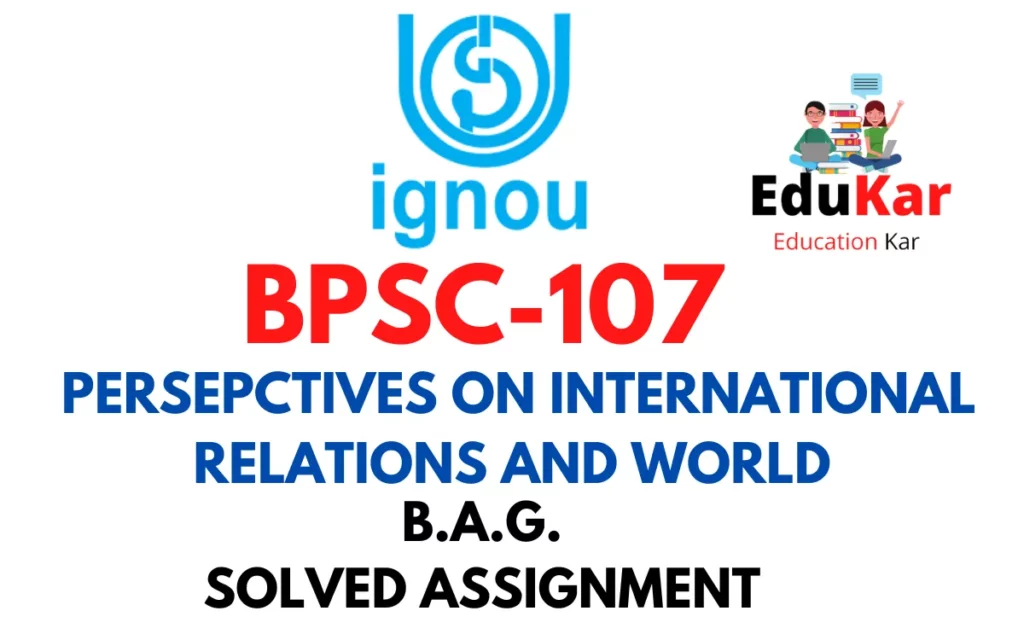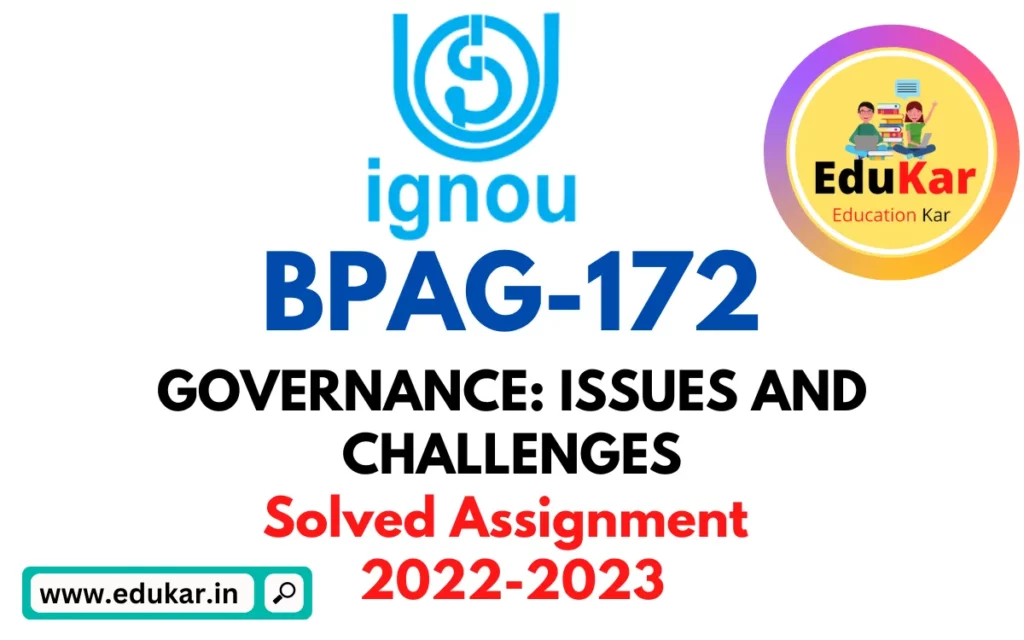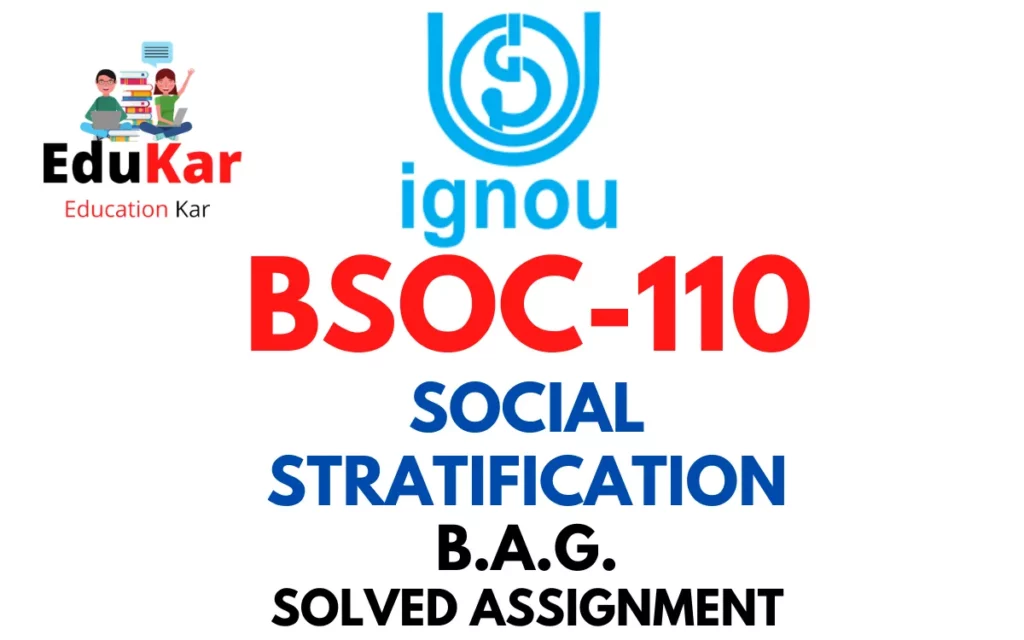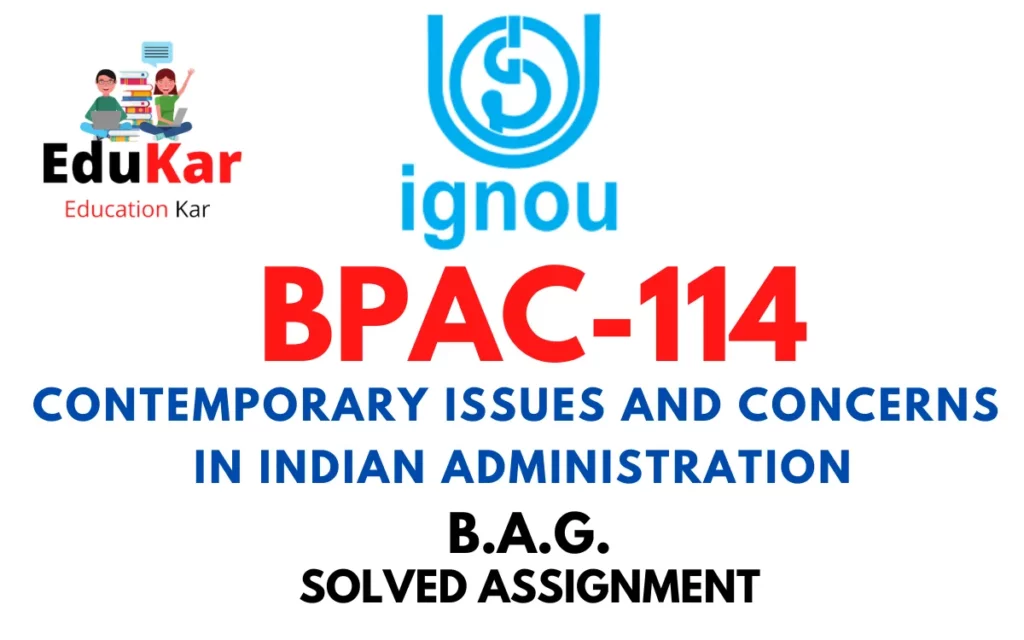Contents
- 1 Assignment – I
- 2 Answer the following in about 500 words each.
- 3 1. Critically examine the democratic experiences of South Asian countries.
- 4 2. How do the external powers influences the geopolitics of South Asia?
- 5 Assignment – II
- 6 Answer the following questions in about 250 words each.
- 7 1. South Asia politics during Cold War.
- 8 2. Highlight dynamics of Global War on Terrorism in South Asia.
- 9 3. Describe dynamics of cultural and linguistic plurality in South Asia.
- 10 Assignment – III
- 11 Answer the following questions in about 100 words each.
- 12 1. Examine the Human Development Index in South Asia.
- 13 2. Nepal’s Political System.
- 14 3. Political reforms and Modernisation.
- 15 4. Political structure in Sri Lanka.
- 16 5. Pattern of diversity and pluralism in South Asia.

| Title | BPSE-144: IGNOU BAG Solved Assignment 2022-2023 (INTRODUCTION TO SOUTH ASIA) |
| University | IGNOU |
| Degree | Bachelor Degree Programme |
| Course Code | BPSE-144 |
| Course Name | INTRODUCTION TO SOUTH ASIA |
| Programme Name | Bachelor of Arts (General) |
| Programme Code | BAG |
| Total Marks | 100 |
| Year | 2022-2023 |
| Language | English |
| Assignment Code | BPSE-144/ASST/TMA/2022-23 |
| Last Date for Submission of Assignment: | For June Examination: 31st April For December Examination: 30th September |
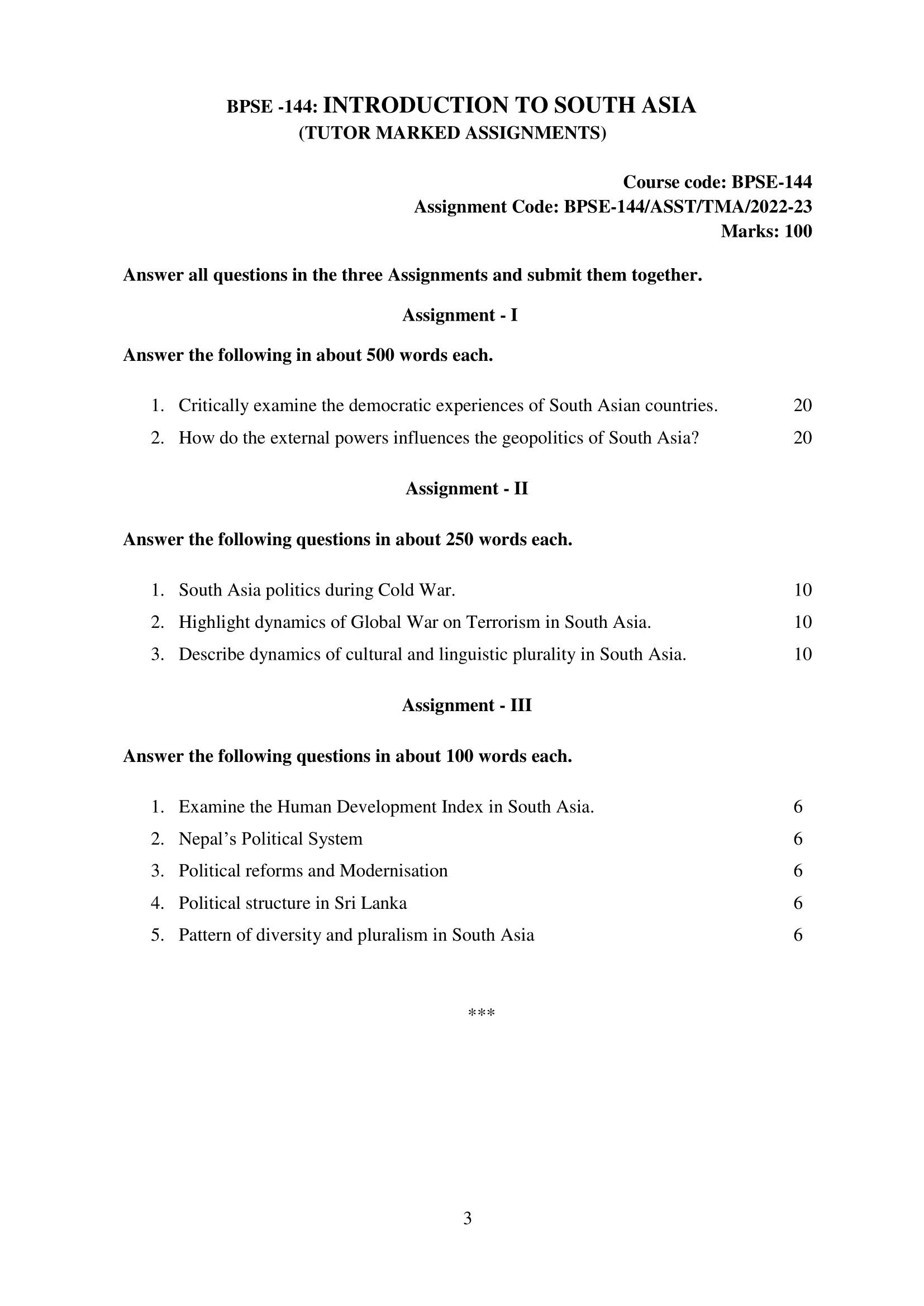
Assignment – I
Answer the following in about 500 words each.
1. Critically examine the democratic experiences of South Asian countries.
Ans: South Asia encompasses a region of diverse political systems, ranging from parliamentary democracies to military regimes. Despite the region’s rich cultural and ethnic diversity, democratic governance has faced numerous challenges throughout the region.
In India, the world’s largest democracy, the electoral process has generally been free and fair, and the country has a long history of peaceful transitions of power. However, the Indian democracy has faced challenges such as corruption, bureaucratic inefficiency, and communal tensions. Additionally, the country’s political system is dominated by a few powerful political parties, leading to a lack of representation for smaller, regional parties.
Pakistan, on the other hand, has had a tumultuous history of military coups, periods of military rule, and political instability. The country has only recently seen a strengthening of its democratic institutions, with the last decade witnessing the first successful transition of power from one elected government to another. Nevertheless, the military continues to wield significant influence in Pakistani politics, and the country faces challenges such as corruption, ethnic tensions, and terrorism.
In Bangladesh, the restoration of democracy in 1991 marked the end of a long period of military rule. However, the country has struggled to establish a stable democratic system, with frequent changes of government, allegations of human rights violations, and political violence. The country’s politics have also been dominated by a few powerful individuals and parties, leading to a lack of representation for smaller, regional parties.
In Sri Lanka, the country’s democratic experience has been marked by ethnic tensions between the Sinhalese majority and the Tamil minority, leading to periods of civil war and military rule. The country has made progress towards reconciliation and stability in recent years, but challenges to its democratic system remain, such as corruption, weak rule of law, and limited representation for minority groups.
Nepal has undergone a dramatic political transformation in recent years, with the country transitioning from a monarchy to a federal democratic republic. However, the country continues to face challenges such as corruption, weak rule of law, and limited representation for minority groups. The country’s political system is also dominated by a few powerful parties, leading to a lack of representation for smaller, regional parties.
2. How do the external powers influences the geopolitics of South Asia?
Ans: The geopolitical landscape of South Asia is shaped by a complex interplay of internal and external factors, with external powers playing a significant role in shaping the region’s political and economic landscape.
The most prominent external power influencing South Asian geopolitics is the United States. The US has historically been involved in South Asia for strategic and economic reasons, maintaining close military and economic ties with India, while also providing military aid and support to Pakistan. The US has also been involved in regional peace initiatives and has played a role in resolving conflicts in the region, such as the Sri Lankan Civil War.
Another key external power influencing South Asian geopolitics is China. China has a growing economic and strategic presence in the region, investing in infrastructure projects and engaging in trade with countries such as Pakistan and Sri Lanka. China’s growing influence in the region has been seen as a challenge to traditional US dominance, with some viewing China’s investments as a means of securing its own strategic interests and expanding its global influence.
Russia also plays a role in South Asian geopolitics, with historical ties to India and ongoing military cooperation with the country. Russia has also been involved in regional peace initiatives and has played a role in resolving conflicts, such as the Afghan War.
The European Union and Japan are also key players in South Asian geopolitics, with both countries maintaining economic and strategic ties with countries in the region. The EU has been involved in regional peace initiatives, such as supporting the peace process in Sri Lanka, while Japan has played a role in promoting economic development in the region through its development assistance programs.
Assignment – II
Answer the following questions in about 250 words each.
1. South Asia politics during Cold War.
Ans: During the Cold War, the politics of South Asia was shaped by the global power struggle between the United States and the Soviet Union. Both superpowers sought to extend their influence in the region, with each backing different political factions and countries in the region.
In India, the Soviet Union maintained close ties with the country, providing military and economic aid and support to the Indian government. The US, on the other hand, viewed India as a non-aligned nation and sought to maintain close ties with the country, but also supported Pakistan as a counterbalance to Soviet influence in the region.
Pakistan, a key ally of the US during the Cold War, received significant military and economic aid from the US. The country served as a critical staging ground for US efforts to contain Soviet influence in the region, particularly in Afghanistan, where the US supported the Afghan resistance against Soviet occupation.
In Afghanistan, the Soviet Union intervened in 1979 to support the communist government, leading to a decade-long conflict that had significant regional and global implications. The US, along with other Western countries, supported the Afghan resistance, with the conflict becoming one of the key proxy wars of the Cold War.
In Sri Lanka, the country faced a civil war during the Cold War, with the Soviet Union supporting the Tamil Tigers, a separatist group fighting for independence from Sri Lanka, while the US supported the Sri Lankan government.
2. Highlight dynamics of Global War on Terrorism in South Asia.
Ans: The Global War on Terrorism (GWOT) had a profound impact on South Asia, shaping the region’s security and political landscape in the post-9/11 era. The region, particularly Afghanistan and Pakistan, became central to the GWOT, with the US and its allies launching military operations in both countries in response to the 9/11 attacks.
In Afghanistan, the US-led military intervention toppled the Taliban government, which had been harboring Al-Qaeda leaders responsible for the 9/11 attacks. The US-led coalition established a new government and launched a counterinsurgency campaign aimed at stabilizing the country and defeating the Taliban insurgency. Despite significant progress in the initial years, the Taliban has since regained significant territory, and the conflict in Afghanistan continues to this day.
In Pakistan, the GWOT had a profound impact on the country’s security and political landscape. The US launched a series of drone strikes in the country aimed at killing Al-Qaeda and Taliban leaders, while also providing military and economic aid to the Pakistani government. The US-Pakistan relationship became strained, with many in Pakistan viewing the US actions as a violation of the country’s sovereignty. The GWOT also had a significant impact on the security situation in the country, with a rise in extremist violence and terrorism in the aftermath of the US-led intervention in Afghanistan.
In India, the GWOT had a significant impact on the country’s security, with the country facing an increased threat of terrorism, particularly from Pakistan-based militant groups. The Indian government also sought to enhance its cooperation with the US and its allies in the GWOT, with India becoming a key partner in the US-led coalition against terrorism.
3. Describe dynamics of cultural and linguistic plurality in South Asia.
Ans: South Asia is a region of remarkable cultural and linguistic plurality, with a rich and diverse cultural heritage that reflects the region’s long and complex history. The region is home to a wide range of languages, religions, and ethnic groups, each with its unique cultural traditions, beliefs, and practices.
The cultural and linguistic diversity of South Asia is a result of the region’s historical and geographical position at the crossroads of various civilizations and empires. The region was home to various ancient civilizations, such as the Indus Valley Civilization, and has been ruled by different dynasties and empires, such as the Mughals and the British, over the course of history. This has resulted in a fusion of cultures and traditions, with each group influencing and being influenced by the others.
The cultural and linguistic diversity of South Asia is also reflected in the region’s religious composition, with Hinduism, Buddhism, Islam, and Christianity being some of the major religions in the region. This religious diversity has led to the coexistence of different communities and the development of a pluralistic and tolerant society, with each religion and community influencing and being influenced by the others.
However, this cultural and linguistic plurality has also led to tensions and conflicts in the region, particularly in the realm of identity and politics. The region has a long history of ethnic and religious conflict, with different communities vying for political and economic power and resources. This has resulted in the marginalization and discrimination of certain communities, and has also led to the development of separatist movements and demands for self-determination.
Assignment – III
Answer the following questions in about 100 words each.
1. Examine the Human Development Index in South Asia.
Ans: The Human Development Index (HDI) is a measure of a country’s average achievement in three basic dimensions of human development: a long and healthy life, access to knowledge, and a decent standard of living. In South Asia, the HDI ranges from a high of 0.760 in Sri Lanka to a low of 0.509 in Afghanistan. On average, the HDI of South Asian countries is lower than the global average, reflecting the region’s low level of human development. Despite some progress in human development, many South Asian countries face significant challenges, such as poverty, inequality, and limited access to education and healthcare. The low HDI in the region is due to a combination of factors, such as low levels of economic growth, poor governance, and limited investment in human capital. Addressing these challenges and promoting human development in the region is crucial for achieving sustainable and inclusive growth and development in South Asia.
2. Nepal’s Political System.
Ans: Nepal’s political system is a federal democratic republic. The country has a multi-party system, with the President serving as the head of state and the Prime Minister as the head of government. The Nepalese Parliament is composed of two houses: the House of Representatives and the National Assembly. The judiciary is independent and operates separately from the legislative and executive branches. Political parties and interest groups play a significant role in shaping the country’s political landscape. In recent years, there have been calls for political reforms to address issues such as corruption, limited political representation, and the need for more inclusive governance. Despite some challenges, Nepal’s political system has made progress towards democratization, and the country has held several successful elections since the end of the monarchy in 2008.
3. Political reforms and Modernisation.
Ans: Political reforms refer to changes or modifications made to the political system, institutions, and processes to make them more efficient, democratic, and transparent. Modernization, on the other hand, involves the transformation of societies to become more advanced and technologically developed. Political reforms and modernization are interrelated as they both aim to improve governance and the quality of life for citizens. Reforms in the political system can lead to greater accountability, participation, and representation of citizens. At the same time, modernization brings about economic growth, improved living standards, and advances in technology that can support more effective governance. Both reforms and modernization require a commitment to change and a willingness to adapt to new ideas and approaches.
4. Political structure in Sri Lanka.
Ans: Sri Lanka has a semi-presidential representative democratic system with a President serving as both the head of state and head of government. The President is elected by popular vote for a six-year term and has executive power over the government. The Parliament of Sri Lanka is a unicameral body comprised of 225 members, who are elected by popular vote for a five-year term. The Parliament has the power to make laws and exercise control over the government. The judiciary in Sri Lanka is independent and consists of the Supreme Court, the Court of Appeal, and various lower courts. The country is divided into nine provinces, each governed by a governor appointed by the President. Sri Lanka’s political system has faced several challenges, including ethnic tensions between the majority Sinhalese and minority Tamil populations and concerns over the concentration of power in the presidency.
5. Pattern of diversity and pluralism in South Asia.
Ans: South Asia is a region characterized by a rich diversity of ethnic, religious, linguistic, and cultural groups. The region is home to over a billion people, representing many different communities and traditions. This pluralism is reflected in the political systems of the various countries in the region, which range from parliamentary democracies to authoritarian regimes. Despite this diversity, South Asian countries also share many common challenges related to poverty, inequality, political instability, and conflict. In many cases, these challenges are rooted in historical tensions between different ethnic, religious, or linguistic groups, or between the rural and urban populations. To address these issues, South Asian countries have adopted a variety of approaches, ranging from affirmative action policies to promote diversity to initiatives aimed at promoting reconciliation and cooperation between different groups. Despite the challenges, South Asia’s diversity and pluralism are a source of its unique cultural richness and a testament to its ability to adapt and evolve over time.
How to Download BPSE-144 Solved Assignment?
You can download it from the www.edukar.in, they have a big database for all the IGNOU solved assignments.
Is the BPSE-144 Solved Assignment Free?
Yes this is absolutely free to download the solved assignment from www.edukar.in
What is the last submission date for BPSE-144 Assignment?
For June Examination: 31st April, For December Examination: 30th October

